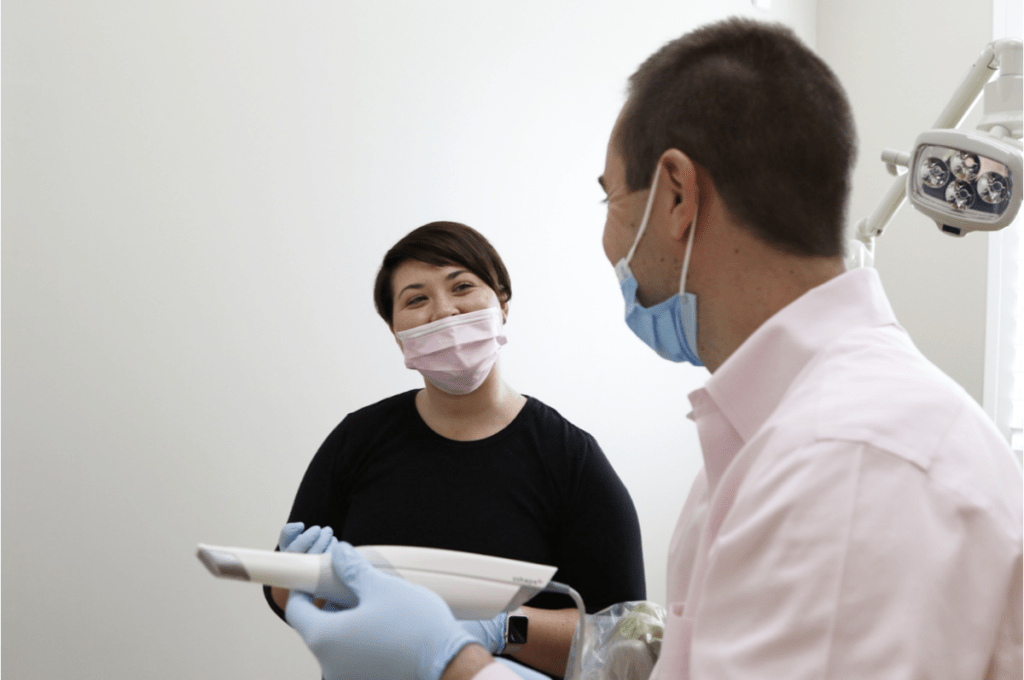During your braces treatment, many changes take place in your daily routine that may take some time to adjust. While these changes can be complicated, maintaining healthy oral hygiene is essential to have the best treatment possible while wearing braces. At Seabreeze Orthodontics, Dr. Juan believes every patient should have access to all the information they need to get their best smile. To help you ease through the adjustment period, here are some tips to better prepare you for your journey to a healthier smile.
Tip #1 – Make sure you have a quality toothbrush
Your toothbrush is your primary cleaning tool for maintaining healthy oral care. Using a high-quality toothbrush while you have braces ensures your teeth remain properly cleaned and give you the best chance for the most successful treatment. Both manual and electric toothbrushes work well to clean braces, but consulting your orthodontist is recommended before choosing a new toothbrush or changing your routine.
Electric brushes come in various styles with different appliances, so your orthodontist can help you decide what brush is right for you. The main types of electric brushes are usually battery-operated vs. rechargeable toothbrushes. Battery-operated toothbrushes typically range from around $5 – 25, while rechargeables can go anywhere from $50 – $300, depending on features.
Manual, soft toothbrushes also work just fine to clean the areas around your brackets. However, many professionals recommend the orthodontic cut, where the bristles are in a subtle “V” shape, with the middle bristles being lower than the outer bristles.
Tip #2 – Pre-rinse before brushing
Sometimes food can get stuck between your braces which can be difficult for your toothbrush to reach. Before brushing, rinse your mouth with water to dislodge any food particles stuck between your braces. Make sure to swish for about 30 seconds. Also, rinse your toothbrush before adding toothpaste, as this will shed debris and bacteria that may have lingered after your last brushing. Swishing with water before brushing is a great way to help loosen up food attached to your braces, making it easier to protect and perfect your smile.

Tip #3 – Brush and rinse each tooth thoroughly
When you brush, take time with each tooth and carefully examine the spots around the braces where food can become trapped. It is recommended that you brush 2 – 5 minutes per day, twice a day. Using an oral rinse during brushes is helpful as well. Rinsing with mouthwash helps to disinfect the entire mouth, including the spots under the braces where your brush can’t always reach. Consistently brushing and rinsing will ensure your teeth are adequately clean and maintain a healthy glow for the duration of your braces treatment.
Tip #4 – Positioning is key
Holding your brush in the correct position is crucial for proper cleaning technique and easing potential discomfort while brushing. When you brush, make sure you keep your toothbrush in the appropriate place—at a 45-degree angle, above the gum line. Keeping your toothbrush at a 45-degree angle will allow you to reach each tooth and give you the proper angle to scrub around each bracket in your braces and any food or bacteria that may have gotten caught.
#Tip 5 – Don’t forget to brush the backs
It’s easy to forget the back of your teeth when adjusting to brushing with braces, but they are
just as crucial in the cleaning process. Brush the backs of your teeth that face your mouth and throat. Pay most attention to brushing down at the gum line, as this is where most tartar builds. Brush the backs of your teeth that face your mouth and throat. Pay most attention to brushing down at the gum line, as this is where most tartar builds.
Tip #6 – Pay attention to the spaces between your braces.
After your brushing routine is completed, it is essential to finish the job by following through with floss. While regular floss works for patients with braces, some people find it easier to use accessories such as floss threaders or super floss. Threaders are dental tools shaped like thin loops designed to help guide the dental floss easily between your teeth and braces. Super floss typically will also come with threaders and have a stiffened end for further ease. When flossing between braces, thread under the wire and between each tooth to get any plaque or leftover bacteria that was missed during brushing.
Tip #7 – Be Gentle
It’s a common misconception that the harder you brush, the cleaner your teeth will be. That’s not only untrue, but brushing with too much force can damage your braces and cause major discomfort. Some higher-end electric models will have a sensor feature that shuts down if it detects too much pressure. To avoid these situations, it is essential to be gentle with your diet and brushing habits. Foods like candy, gum and nuts can be sticky or tough on your braces and potentially affect treatment if eaten too often.

Tip # 8 – Start Your Orthodontic Journey With Us
At Seabreeze Orthodontics, we want to see our patients achieve their orthodontic goals. With these tips and the guidance of your orthodontist, you can make a smooth transition into brushing with braces. While there are many things to consider, once you find out what practices and products work best for you, creating a new routine will be like riding a bike. If you or someone you know is considering braces, please give us a call. Our office in Myrtle Beach, SC is ready to help you get your best smile!
